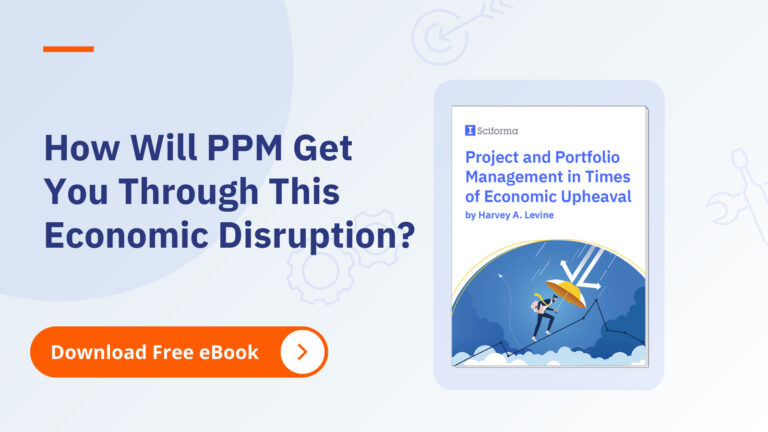Times of economic upheaval — such as the housing debacle of 2008-2009, the aftermath of the COVID outbreak, or the reverberations of the war in Ukraine — have shown us how important it is to take extreme outliers into account when developing business cases and planning initiatives. Project and portfolio managers must consider both known and unknown risks. They should also be prepared to revise and adjust their management models and delivery tactics. Then, they can respond to unforeseen circumstances. As we will see, Enterprise PPM tools can be of great help for this.
What is Enterprise PPM?
An Enterprise Project Portfolio Management system allows an organization to build and maintain a database of active and proposed projects, in a software system designed to aid in the selection and management of portfolios. Enterprise PPM comes with a complete set of capabilities and features to:
- Ensure the selection of high-yield, strategy-aligned projects, based on objective criteria
- Optimize the grouping of projects into portfolios, and make smart adjustments at the portfolio-level
- Optimize the allocation of key resources across initiatives
- Improve communication methods and governance
- Facilitate and accelerate any portfolio-related decision
When business conditions change, your PPM tool is invaluable to help you reevaluate project portfolios; revisit objectives, goals, and strategies; and replace projects that no longer support these drivers with new projects that have become attractive.
Enterprise PPM for effective scenario modeling
Planning considers conditions that might exist. It uses scenarios, as opposed to forecasts. A scenario is not a commitment, but rather a statement of a possible course of events that should be taken into consideration.
To account for risk successfully, project and portfolio leaders should consider three scenarios: a best (or optimistic) scenario, a worst (or pessimistic) scenario, and a most likely (or realistic) scenario.
Enterprise PPM platforms provide dedicated capabilities to conduct “what if” analyses with various project and resource conditions to evaluate alternative scenarios. This gives PMOs the ability to simulate multiple scenarios at the project portfolio level and to compare them against live projects. This way, they can envision the possible outcomes of their strategies across the organization’s entire project portfolio.
As such, Enterprise PPM is an important tool for adapting portfolios to economic shifts in the marketplace.
Enterprise PPM for responsive resource management
Organizations usually allocate resources to their portfolios across four main project categories:
- Maintenance & Utility Projects
- Growth & Enhancement Projects
- Transformation Projects
- Non-Project (Foundation) Work
This distribution is likely to be upset by major economic upheaval. Often most affected are Transformation Projects: these high-risk ventures to develop a new product or service might get delayed or simply canceled in order to free up resources for the other project areas.
Solid Enterprise PPM tools allow PMOs to revise and modify their project selection and resource allocation criteria easily. The goal is to help organizations adjust their resource management strategies rapidly. This way, organizations can respond to threats and capitalize on emerging opportunities.
Enterprise PPM is essential in these times of economic instability, as it can help reduce the damage from economic upheaval and plan a course for recovery. To learn more about PPM in times of economic upheaval, discover our dedicated eBook:







